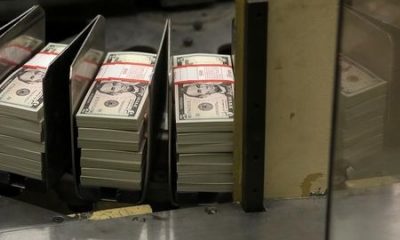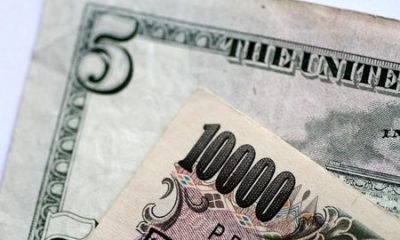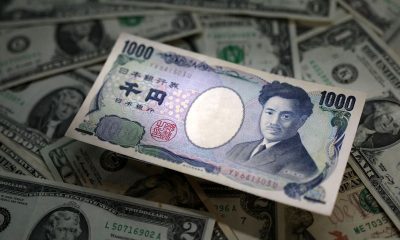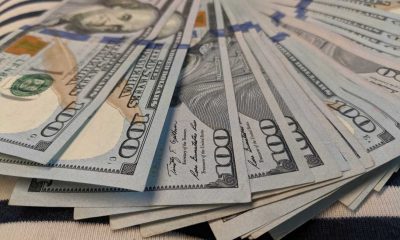Forex
Dollar weakens after yen steadies amid intervention jitters
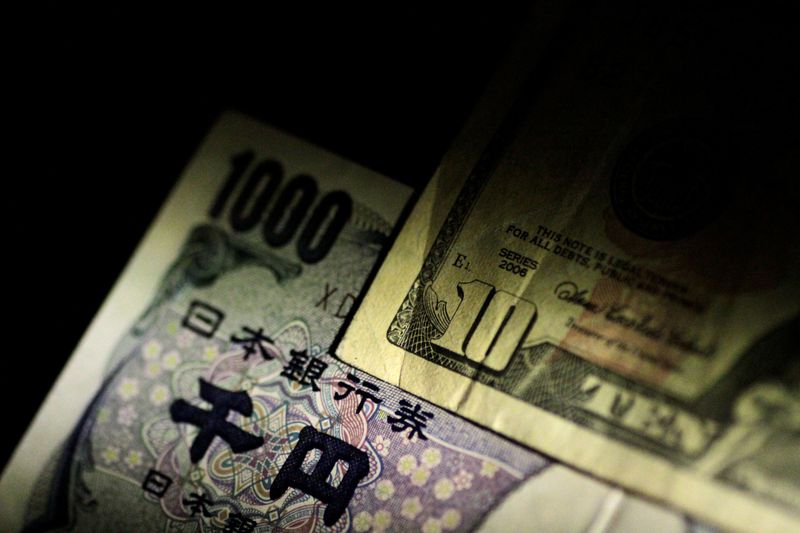
By Alden Bentley, Samuel Indyk and Ankur Banerjee
NEW YORK/LONDON (Reuters) -The dollar eased from a near eight-week high on Monday, with traders back on alert for intervention to support the yen after the Japanese currency flirted with the 160 per dollar level that had earlier drawn verbal warnings from Japanese authorities.
Dollar/yen topped at 159.94 in early trade, its highest since April 29, when the yen touched a 34-year low of 160.245, leading to Japanese authorities spending roughly 9.8 trillion yen to support the currency.
It briefly tumbled in the European morning to 158.75 per dollar, and was last 0.28% weaker at 159.35.
“Certainly didn’t look like intervention … nonetheless, it does speak to how jittery the market likely is about the prospect for intervention,” said Michael Brown, senior research strategist at Pepperstone.
“I think so long as any further weakness is not especially rapid or disorderly in nature, the MoF (Ministry of Finance) are unlikely to step in just yet.”
Earlier, Japan’s top currency diplomat Masato Kanda said authorities will take appropriate steps if there is excessive foreign exchange movement, and that the addition of Japan to the U.S. Treasury’s monitoring list would not restrict their actions.
The yen has come under renewed pressure after the Bank of Japan’s (BOJ) decision this month to postpone reducing bond-buying stimulus until its July meeting. It is down 1.5% in June.
A summary of opinions at the BOJ’s June policy meeting on Monday showed some policymakers called for raising interest rates in a timely fashion as they saw a risk of inflation overshooting expectations.
The yen, which is highly sensitive to U.S. Treasury yields, is down more than 10% against the dollar so far this year, weighed down by the wide difference between interest rates in Japan and the United States.
“We are all trying to figure out if there is a specific level that the MOF may have in mind in terms of defense or whether or not it comes down to general market conditions,” said Brian Daingerfield, FX strategist at Natwest Markets in Stamford, Connecticut.
INFLATION TEST AHEAD
The spotlight this week will be on Friday’s release of the U.S. personal consumption expenditures (PCE) price index, which the Federal Reserve relies on to gauge progress in getting inflation down to its 2% target.
A number showing price pressures easing is likely to bolster bets on a rate cut as early as September, which futures currently price as a 70% prospect.
The , which measures the greenback against a basket of currencies including the yen and the euro, fell 0.41% to 105.45, edging back from a nearly eight-week high of 105.91 it touched last week.
Another focus through the week will be politics. The first U.S. presidential debate between President Joe Biden and his predecessor Donald Trump is on Thursday after U.S. markets close.
“Certainly there’s quite a bit of interest in whether or not the dollar is specifically mentioned,” said Daingerfield. “We know former President Trump has at times criticized the value of the dollar as being too strong.”
The first round of voting in the French election is on Sunday.
“You’re going to see a lot of defensive positioning going into the first round of the French election and U.S. presidential debate,” said Simon Harvey, head of FX analysis at Monex.
The euro, which has been under pressure since French President Emmanuel Macron called a snap election earlier this month, was up 0.44% at $1.0738 but was still down about 1% in June so far.
France’s far right National Rally (RN) party and its allies were seen leading the first round of the country’s elections with 35.5% of the expected vote, an opinion poll published on Sunday showed.
RN lawmaker Jean-Philippe Tanguy, who is widely seen as the most likely candidate to head the finance ministry if the party wins and forms a government, told Reuters an RN government would stick to the European Union’s fiscal rules.
Sterling strengthened 0.28% at $1.268. The Australian dollar strengthened 0.18% versus the greenback to $0.6651 and the strengthened 0.16%.
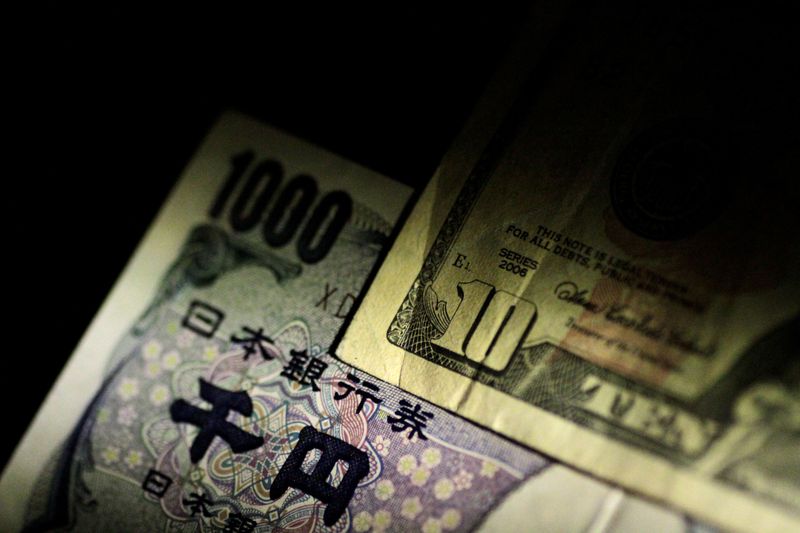
Meanwhile, spot yuan was trading at 7.2585 per dollar, close to its lowest in seven months, weighed by broad strength in the dollar and worries about weakness in the world’s second-largest economy. [CNY/]
In cryptocurrencies, bitcoin fell to its lowest since May 10 and was down 4.52% at $61,267.00. declined 5.98% at $3310.26.
Forex
Euro, yen climb as dollar rally takes a breather
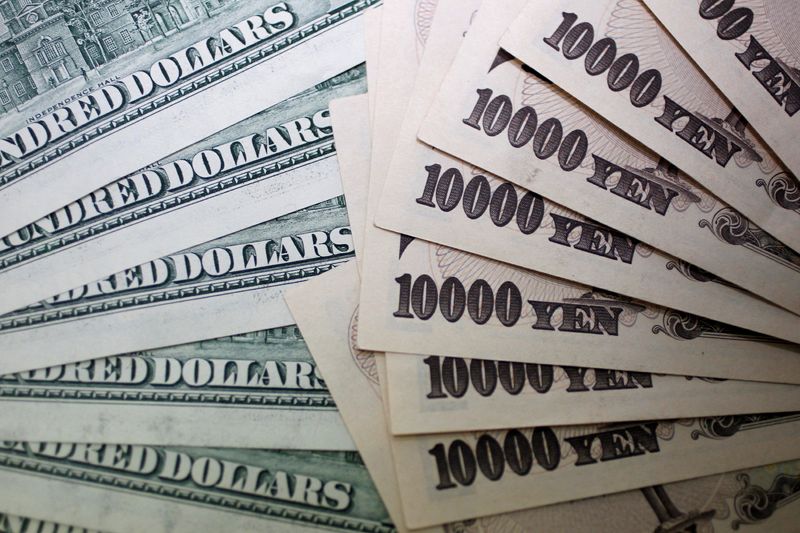
By Chuck Mikolajczak
NEW YORK (Reuters) -The euro and Japanese yen strengthened on Thursday as the U.S. dollar paused after rallying to a nearly three-month high, with the greenback only briefly moving off earlier lows as data supported views for slower rate cuts by the Federal Reserve.
Weekly initial jobless claims fell to 227,000, below the 242,000 estimate of economists polled by Reuters, while continuing claims rose to a nearly three-year high. The Fed is likely to discount the climb earlier in claims this month due to distortions from Hurricane Helene.
A separate report from S&P Global said its flash U.S. Composite PMI Output Index, which tracks the manufacturing and services sectors, rose to 54.3 this month from a final reading of 54.0 in September. A reading above 50 signals expansion.
The greenback has climbed in 16 of the past 18 sessions, on pace for its fourth straight week of gains, as a run of positive economic data has quieted expectations about the size and speed of the Fed’s rate cuts, which has also lifted U.S. Treasury yields.
“We’re looking at some profit-taking here,” said Joseph Trevisani, senior analyst at FXStreet in New York.
“But underneath that, of course, has been the shift in rates and the shift in perception about what the Fed is going to do. And that hasn’t changed so for the moment, we’re kind of holding.”
The yield on benchmark U.S. 10-year notes fell 4.6 basis points to 4.196% after hitting 4.26% in the prior session, its highest in three months.
The , which measures the greenback against a basket of currencies, fell 0.37% to 104.05, its first decline after three straight sessions of gains, with the euro up 0.39% at $1.0823 after hitting a nearly four-month low of $1.076 on Wednesday.
A survey showed euro zone business activity stalled again last month, but the contraction in Germany, Europe’s largest economy, was less steep than the previous month.
Recent comments from Fed officials have indicated the central bank will take a gradual approach to cutting rates. Inflation pressures have been easing but still have yet to return to where they need to be, said Federal Reserve Bank of Cleveland President Beth Hammack on Thursday.
Markets are pricing in a 95.1% chance for a cut of 25 basis points at the Fed’s November meeting, with a 4.9% chance of the U.S. central bank holding rates steady, according to CME’s FedWatch Tool. The market was completely pricing in a cut of at least 25 bps a month ago, with a 58.2% chance of a 50 bps cut.
In contrast, expectations for faster and potentially bigger rate cuts from the European Central Bank (ECB) have increased to weigh on the euro, after a host of policymakers warned about the risk of undershooting the central bank’s 2% inflation target.
ECB policymaker Robert Holzmann said the central bank could cut rates by 25 basis points at its December meeting if circumstances including inflation allow it. Latvian central bank Governor Martins Kazaks said inflation could fall quicker than expected but the ECB should stick to its practice of cutting rates step by step given the exceptional uncertainty.
The dollar has also benefited from a rise in market expectations for a victory next month by Republican candidate and former U.S. President Donald Trump, which would likely bring about inflationary policies such as tariffs.
Sterling strengthened 0.39% to $1.2971. British finance minister Rachel Reeves said she would change the measure of public debt that the government targets in next week’s budget to allow more borrowing for investment.
Against the Japanese yen, the dollar weakened 0.6% to 151.83.
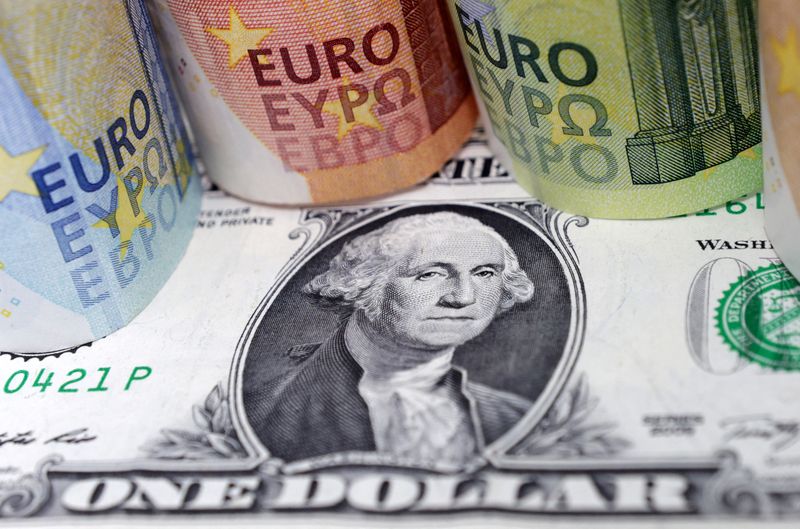
BOJ Governor Kazuo Ueda said the recent fall in the yen was partially driven by optimism over the U.S. economic outlook, and the central bank needs to scrutinize further whether that optimism is sustained.
Ahead of Sunday’s election, polls showed Japan’s coalition government Prime Minister Shigeru Ishiba’s Liberal Democratic Party may struggle to retain its parliamentary majority, which could complicate monetary policy plans by the BOJ.
Forex
Dollar on track for weekly gain; next week’s payrolls looms large
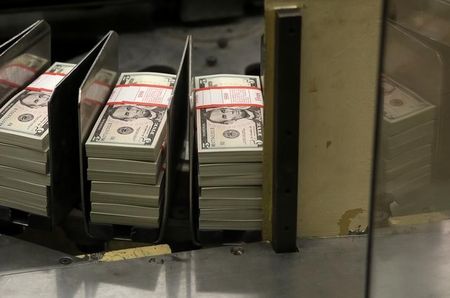
Investing.com – The U.S. dollar held largely steady Friday, on course for a fourth straight week of gains, underpinned by falling expectations of aggressive Fed rate cuts as well as heightened political uncertainty.
At 04:25 ET (08:25 GMT), the Dollar Index, which tracks the greenback against a basket of six other currencies, traded marginally lower at 103.880, still on track for a weekly gain of around 0.6%.
Dollar steadies ahead of payrolls
The dollar has steadied Friday after a slight fall in the previous session on the back of lower U.S. Treasury yields.
However, it has generally been in demand for much of the month as reasonably healthy economic data has seen the market scale back expectations of more hefty rate cuts by the Federal Reserve in the near future.
This relative calm could disappear next week, with a highly consequential U.S. report due next Friday.
However, ahead of this release, the focus may well be on the upcoming US presidential election, as market bets for a possible return of Donald Trump ramp up.
“The polls are clearly telling us the election is too close to call, but markets and betting odds are leaning increasingly in favour of Trump,” said analysts at ING, in a note.
“This may be due to the experience of the past two elections, where Trump was underestimated by polls, but also by greater hedging demand for a Trump presidency, which is seen as a more impactful macro/market event due to protectionism, tax cuts, strict migration policies and risks to the Fed independence.”
ECB to consider large cut?
In Europe, edged marginally higher to 1.0833, on track for a weekly loss of more than 0.3%.
The rose slightly in October, data showed Friday, but sentiment remains weak after eurozone business activity stalled again this month.
The has already cut rates three times this year, each time by 25 basis points, but expectations are growing that the central bank will consider a larger reduction at its next meeting.
“Bundesbank president Joachim Nagel was asked on two separate occasions during his stay in Washington whether he would consider a 50bp cut in December, and both times, he refrained from explicitly pushing back,” said ING. “Nagel is one of the most hawkish members of the Governing Council and would have probably answered with a clearer ‘no’ only a month ago.”
traded largely unchanged at 1.2972, heading for a weekly loss of around 0.5%, but has also edged away from a two-month low seen on Wednesday.
Bank of England Governor speaks on Saturday in Washington, and traders will be looking for any comments on likely future policy after he warned earlier this month that the central bank could become “a bit more activist on rate cuts” if there’s further good news on inflation.
Yen looks to weekend’s election
rose 0.1% to 152.02, steadied near three-month highs, with the pair headed for a 1.6% gain this week – its fourth consecutive week of gains.
Sentiment towards Japanese markets was largely on edge before the general election on Sunday, where local polls showed an alliance led by the ruling Liberal Democratic Party could struggle to reach a majority.
This could lead to Prime Minister Shigeru Ishiba facing an uphill battle to enact more economic reforms.
edged higher to 7.1209, trading in a tight range with a meeting of China’s National People’s Congress, initially slated to take place in late-October, now appearing to be delayed to November.
Forex
Asia FX muted as dollar holds weekly gains; yen steady with election in focus
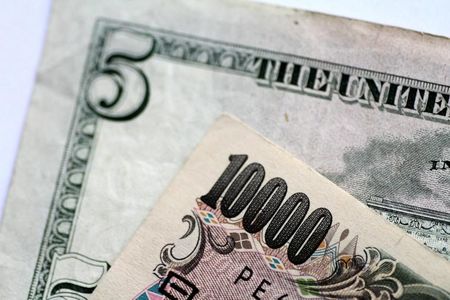
Investing.com– Most Asian currencies weakened slightly on Friday as the dollar retained a bulk of its weekly gains on expectations of a slower pace of interest rate cuts by the Federal Reserve.
The Japanese yen steadied near its weakest level in three months as Japan geared up for a tightly contested general election over the weekend, while verbal warnings on potential currency market intervention also kept traders skittish towards the currency.
Most Asian currencies were nursing losses this week as a mix of factors dented risk aversion, although the yen- traditionally a safe haven- was the worst performer this week.
USDJPY steadies near 152 with election, intervention in focus
The yen’s pair steadied near thee-month highs around 152 yen, and was headed for a 1.6% gain this week- its fourth consecutive week of gains.
Sentiment towards Japanese markets was largely on edge before a general election on Sunday, where local polls showed an alliance led by the ruling Liberal Democratic Party could struggle to reach a majority.
This could lead to Prime Minister Shigeru Ishiba facing an uphill battle to enact more economic reforms, while increased political uncertainty is also expected to undermine expectations for more interest rate hikes from the Bank of Japan.
Consumer inflation data from Tokyo showed inflation eased slightly less than expected in October, but fell below the BOJ’s 2% annual target. The data usually heralds a similar reading from nationwide inflation data.
The yen saw some strength after government officials kept up their warnings of potential intervention in the currency market, given recent weakness in the yen.
Dollar set for fourth week of gains
The and steadied in Asian trade, and were headed for a fourth straight week of gains. The greenback was trading up about 0.6% this week.
In addition to bets on smaller rate cuts, the dollar was also buoyed by increasing bets that Donald Trump will win the 2024 presidential elections. Recent polls and online prediction markets put Trump ahead of Democratic nominee Kamala Harris.
Trump’s policies are expected to be inflationary, presenting a higher outlook for U.S. rates in the long term.
Concerns over stickier U.S. interest rates sparked weakness in Asian markets, with most regional currencies headed for weekly declines.
The Chinese yuan’s pair rose 0.1% on Friday and was set to rise 0.3%. A meeting of China’s National People’s Congress, initially slated to take place in late-October, now appeared to be delayed to November.
The Australian dollar’s {{|AUDUSD}} pair fell 0.3% on Friday, while the South Korean won’s pair surged 0.7%.
The Singapore dollar’s pair rose 0.2%, while the Indian rupee’s pair hovered close to record highs.

 Forex2 years ago
Forex2 years agoForex Today: the dollar is gaining strength amid gloomy sentiment at the start of the Fed’s week

 Forex2 years ago
Forex2 years agoHow is the Australian dollar doing today?

 Forex2 years ago
Forex2 years agoDollar to pound sterling exchange rate today: Pound plummeted to its lowest since 1985

 Forex2 years ago
Forex2 years agoUnbiased review of Pocket Option broker

 Cryptocurrency2 years ago
Cryptocurrency2 years agoWhat happened in the crypto market – current events today

 World2 years ago
World2 years agoWhy are modern video games an art form?

 Commodities2 years ago
Commodities2 years agoCopper continues to fall in price on expectations of lower demand in China

 Forex2 years ago
Forex2 years agoThe dollar is down again against major world currencies



